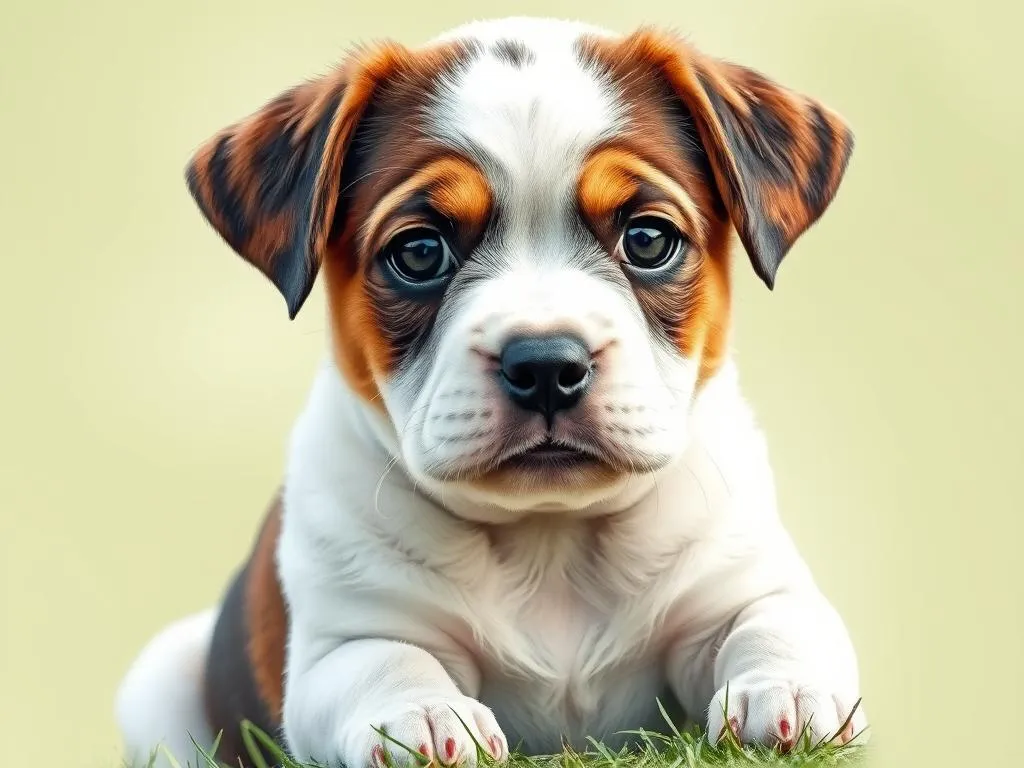
Introduction
Puppies have captured the hearts of many, becoming beloved companions and symbols of joy. Drawing these adorable creatures not only allows you to express your love for them but also serves as a fantastic way to relax and explore your creativity. Engaging in art can be therapeutic, helping you unwind and focus your mind away from daily stresses. In this guide, we’ll delve into how to draw a puppy by covering fundamental techniques, necessary materials, and a step-by-step approach to crafting your own puppy masterpiece.
Understanding the Basics of Drawing
Importance of Basic Drawing Skills
Before diving into the specifics of drawing a puppy, it’s essential to understand the importance of foundational drawing skills. Mastery of basic shapes, such as circles, squares, and triangles, serves as the building blocks for more complex forms. When drawing animals, recognizing how these shapes fit together is crucial.
For instance, the head of a puppy can often be represented as a circle, while the body may be drawn as an oval. Understanding proportions and anatomy will significantly enhance your ability to capture the essence of a puppy, making your drawings more relatable and lifelike.
Materials Needed for Drawing
Having the right materials can make a substantial difference in your drawing experience. Here’s a list of essential supplies:
- Pencils: A range of pencils from HB to 6B will help you achieve various shades and textures.
- Erasers: A kneaded eraser is particularly useful for subtle corrections without damaging your paper.
- Paper: Use sketch paper for practice and higher-quality paper for finished drawings.
- Colors: Colored pencils, markers, or watercolors, depending on your preference.
For beginners, I recommend starting with basic sketching pencils and paper. More advanced artists might explore specialized tools like blending stumps or watercolor brushes.
Learning Puppy Anatomy
Basic Puppy Proportions
Understanding puppy anatomy is essential for creating a realistic drawing. Puppies are generally proportionate but have distinct features that differentiate them from adult dogs. Their heads tend to be larger in comparison to their bodies, creating a cute, endearing appearance.
The legs are often short relative to their bodies, and their tails can vary greatly in length depending on the breed. Familiarizing yourself with these characteristics will help when sketching a puppy’s silhouette.
Key Features of Puppies
When drawing a puppy, focus on capturing its unique features:
- Eyes: Puppies typically have large, expressive eyes that convey innocence and playfulness.
- Nose: The nose is often round and black, which adds to their charm.
- Ears: Puppy ears can be floppy or erect, depending on the breed, and play a significant role in conveying personality.
- Tail and Paws: A wagging tail is a sign of happiness, while paws should be drawn with attention to their size and shape to maintain proportionality.
By concentrating on these features, you can ensure your drawing captures the essence of a puppy.
Step-by-Step Guide to Drawing a Puppy
Sketching the Outline
Start by lightly sketching the basic outline of your puppy using simple shapes. Begin with a circle for the head and an oval for the body. Next, add two smaller ovals for the legs and a triangle for the tail. This foundational structure sets the stage for your detailed drawing.
- Positioning: Ensure the puppy is well-positioned on the paper, leaving enough space around it for any additional elements you might want to add later, such as a background.
Adding Details
Once you’re satisfied with your outline, it’s time to refine your sketch by adding details. Start with the eyes, making them large and expressive. Follow with the nose and mouth to give your puppy character.
- Fur Texture: Use short, light strokes to create the illusion of fur. Varying your pencil pressure can help add depth and dimension to the coat.
Inking the Drawing
After refining your sketch, it’s time to ink your drawing. Choose quality inking tools like fine liners or brush pens. Carefully go over your pencil lines, ensuring you’re confident in your strokes to avoid smudging.
- Technique: To prevent smudging, let the ink dry completely before erasing any pencil lines. This will keep your artwork clean and sharp.
Coloring Your Puppy
The final step is to add color to your drawing. Begin by selecting a color palette that reflects your puppy’s breed. Consider the following tips:
- Color Theory: Understanding the basics of color theory can help you choose complementary colors. For instance, a light brown puppy can be accentuated with darker browns for shadowing.
- Shading and Blending: Use blending techniques to create soft transitions between colors, and apply darker shades in areas that would naturally have shadows, like under the belly and behind the ears.
Advanced Techniques for Drawing Puppies
Different Breeds and Styles
Once you’re comfortable with basic puppy drawings, consider exploring various breeds. Each breed has unique characteristics that can be fun to depict. For example:
- Golden Retrievers: Known for their friendly faces and fluffy fur.
- Dachshunds: Their long bodies and short legs present a different challenge.
Additionally, you can experiment with stylizing your drawings. Cartoon styles might exaggerate features for a fun effect, while realistic styles will require more attention to detail.
Incorporating Backgrounds and Context
To enhance your puppy drawing, consider adding a simple background. A well-chosen backdrop can bring your puppy to life. Here are some ideas:
- Park Setting: Draw grass and trees to depict a playful day outdoors.
- Home Environment: A cozy living room can create a warm context for your puppy.
Adding these elements not only enriches your artwork but also tells a story about the puppy’s personality.
Common Mistakes to Avoid
Overcomplicating the Drawing
One of the biggest pitfalls for beginners is overcomplicating their drawings. Remember, simplicity is key. Focus on basic shapes and build from there. Trying to add too many details too soon can lead to frustration.
Not Using References
Using reference images is crucial for accuracy. Whether you’re drawing from photos or real life, having something to reference will enhance your understanding of shapes, proportions, and details.
Neglecting Practice
Drawing is a skill that improves with consistent practice. Set aside time each day or week to sketch. Maintaining a sketchbook can help you track your progress and encourage daily drawing exercises.
Resources for Further Learning
Online Tutorials and Videos
There are numerous online resources available for those looking to improve their drawing skills. YouTube is a treasure trove of tutorials focused on how to draw a puppy, where you can find step-by-step processes demonstrated by various artists.
Books and Courses
Consider investing in books that specialize in drawing animals to deepen your understanding of techniques. Additionally, online courses can provide structured learning, allowing you to progress at your own pace while receiving feedback from instructors.
Conclusion
Drawing a puppy can be an immensely rewarding creative endeavor. By understanding the basics of drawing, puppy anatomy, and following a structured approach, you can create heartwarming representations of these lovable creatures. Remember to practice regularly, embrace the learning process, and most importantly, enjoy the journey of bringing your artistic visions to life.
Feel free to share your drawings and experiences with others, as art is best enjoyed when shared! Happy drawing!









